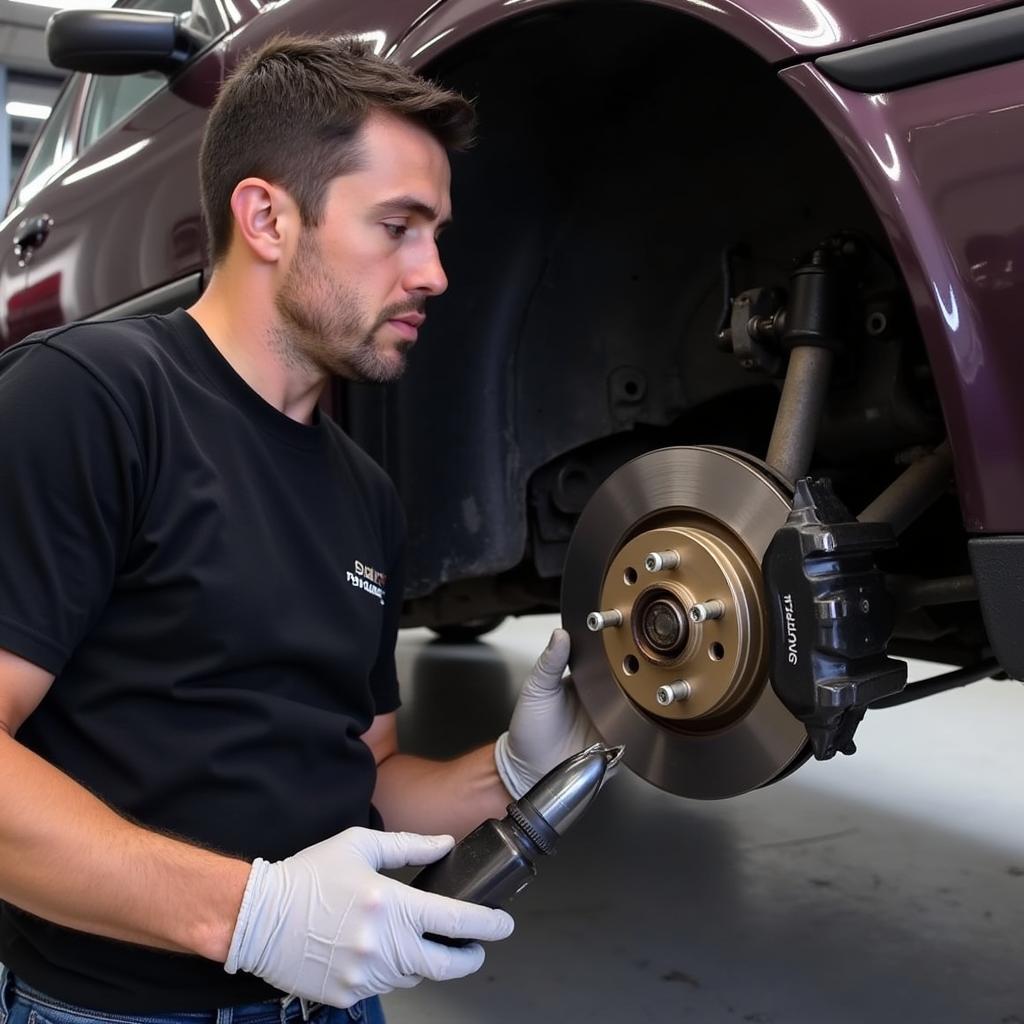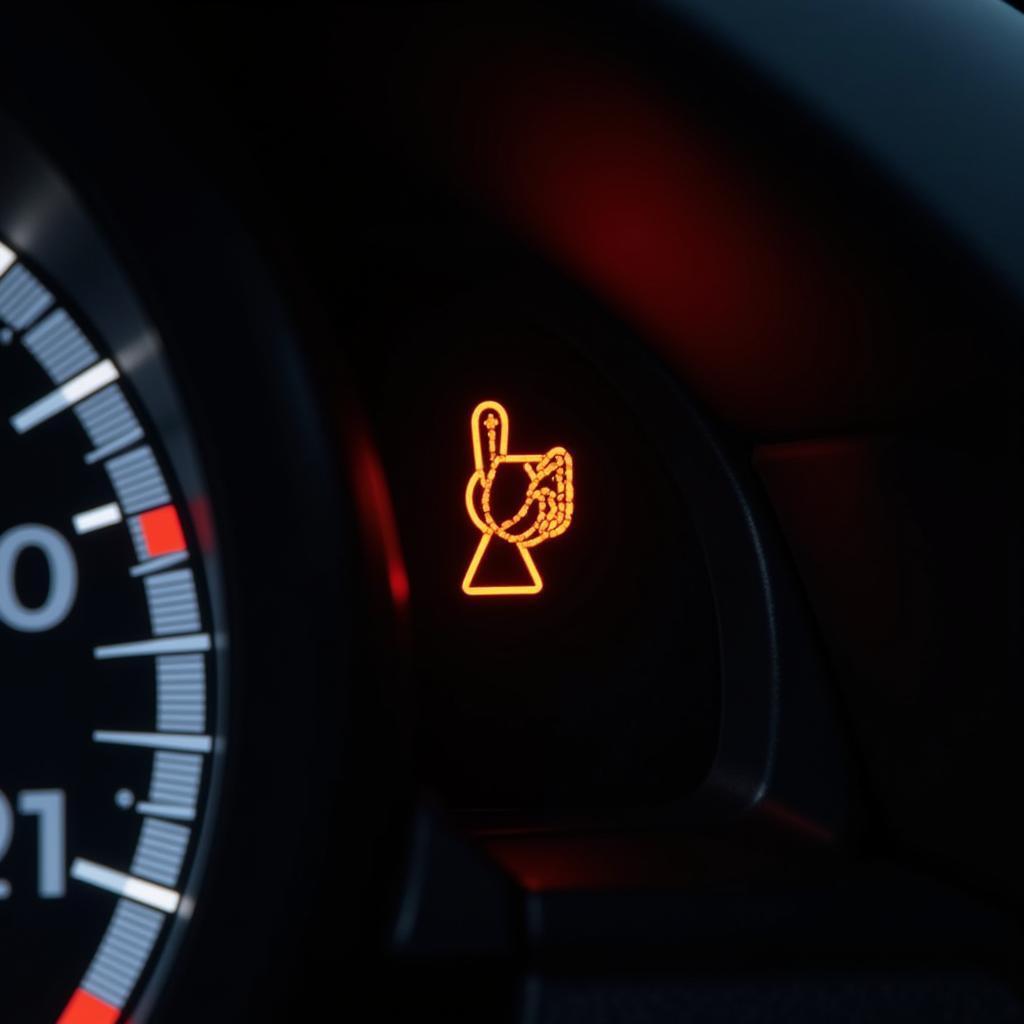You’re driving your trusty 1995 Subaru Legacy Wagon when suddenly, the brake warning light illuminates on the dashboard. A sinking feeling sets in. What could be wrong? Don’t panic. A persistent brake warning light, while concerning, doesn’t necessarily mean a catastrophic failure. This article will guide you through the common causes and solutions for a brake warning light that refuses to switch off in your 1995 Subaru Legacy Wagon.
Understanding Your Brake Warning Light
Before we dive into the specifics of your Subaru, it’s important to understand what triggers that little red light. The brake warning light serves as a crucial safety feature, designed to alert you to potential issues within your braking system. When illuminated, it signifies one or more of the following:
- Low brake fluid level: This is the most common culprit. Brake fluid is the lifeblood of your hydraulic braking system, and a leak or low fluid level can significantly compromise braking performance.
- Engaged parking brake: It might seem obvious, but sometimes we forget! If the parking brake is even slightly engaged, the warning light can illuminate.
- Worn brake pads: Brake pads are designed to wear down over time. When they reach a certain thinness, a sensor triggers the warning light, signaling the need for replacement.
- Faulty brake light switch: This switch activates your brake lights when you press the pedal. If faulty, it can disrupt the warning light circuit.
- ABS issue: While less common in a 1995 model, a problem with your Anti-lock Braking System (ABS) can also trigger the warning light.
Common Causes in a 1995 Subaru Legacy Wagon
While the above reasons apply to most vehicles, some issues are more prevalent in specific models. For a 1995 Subaru Legacy Wagon, the following are particularly common:
- Brake Fluid Leak at the Master Cylinder: The master cylinder is a critical component that converts pedal pressure into hydraulic force. Over time, the seals within the master cylinder can wear down, leading to leaks and activating the brake warning light.
- Brake Hose Deterioration: Rubber brake hoses connect the rigid brake lines to the calipers and wheels. Exposure to heat, moisture, and road debris can cause these hoses to crack and leak, compromising brake fluid pressure.
Troubleshooting the Brake Warning Light
Here’s a step-by-step guide to help you diagnose the issue:
- Check the Parking Brake: Start with the simplest solution. Ensure the parking brake is fully disengaged.
- Inspect Brake Fluid Level: Locate the brake fluid reservoir under the hood. Check the fluid level. If it’s below the “MIN” mark, add the correct DOT 3 or DOT 4 brake fluid (check your owner’s manual) until it reaches the “MAX” line.
- Examine for Leaks: Carefully inspect the master cylinder, brake lines, and hoses for any signs of fluid leaks. Look for wet spots, drips, or corrosion.
- Check Brake Pad Wear: If you’re comfortable with basic car maintenance, you can remove a wheel to inspect the brake pad thickness. If you see less than ¼ inch of pad material, it’s time for replacements.
Important: If you notice a leak, significantly low brake fluid, or suspect a problem beyond your comfort level, stop troubleshooting and consult a qualified mechanic immediately. Driving with compromised brakes is extremely dangerous.
 Mechanic inspecting brake pads
Mechanic inspecting brake pads
Remote Diagnostics and Programming: A Modern Solution
In today’s tech-savvy world, you have access to advanced solutions that weren’t available even a few years ago. Remote diagnostics and programming offer convenient and efficient ways to diagnose and potentially resolve certain car issues.
Here’s how it works:
- Connect to Your Car: Using specialized equipment, a certified technician can remotely access your vehicle’s onboard computer system.
- Run Diagnostics: The technician can run comprehensive diagnostics to pinpoint the exact cause of the brake warning light, even identifying intermittent issues that are difficult to replicate in a traditional shop setting.
- Reprogram or Reset Systems: In some cases, the technician can reprogram faulty modules or reset warning lights remotely, potentially saving you a trip to the mechanic.
“Remote diagnostics revolutionizes the way we approach car repair,” says John Smith, Senior Automotive Engineer at XYZ Automotive. “For certain issues, it offers an efficient and cost-effective alternative to traditional methods.”
Conclusion
A brake warning light should never be ignored. While the issue might be something as simple as low brake fluid, it could also signal a more serious problem. By following the steps outlined in this article, you can try to diagnose the cause of the warning light in your 1995 Subaru Legacy Wagon. However, always remember that safety is paramount. If you’re unsure or uncomfortable at any point, consult a qualified mechanic to ensure your brakes are in optimal working order.

